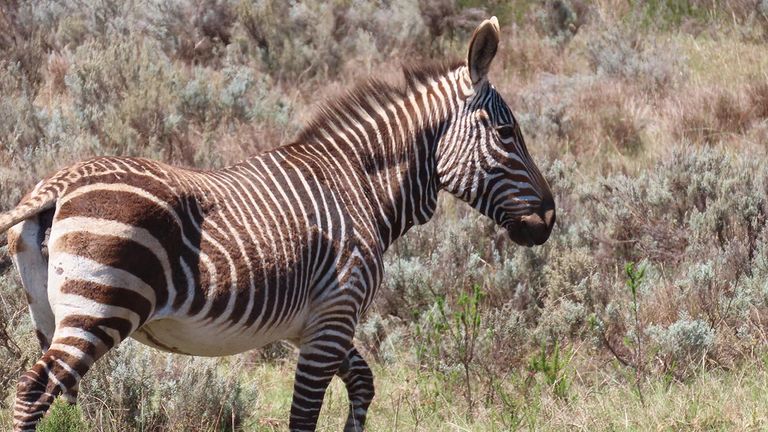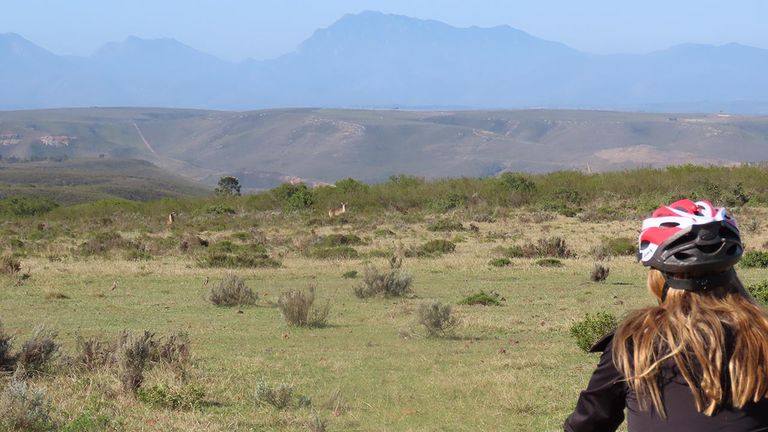I consider myself a veteran safari-enthusiast. Having been jostled in the front seat of a dusty Toyota Land Cruiser on countless occasions, I thought nothing could surprise me in the bush any longer.
Evidently, I had thought wrong.
Upon arriving at Gondwana Game Reserve, my boyfriend and I were baffled if we had inputted the correct address in our GPS. Instead of the low-lying savannah grasses and ubiquitous baobab trees that were synonymous with my previous experiences in Kruger National Park, the reserve was reminiscent of a rainforest — misty and alluring, with the extraordinary hues of indigenous flowers blanketing vast and verdant mountainous terrain.
Gondwana Game Reserve is tucked snugly into South Africa’s “Garden Route,” a nickname that pays homage to the intricate ecological diversity on the winding coastal route from Cape Town to the Eastern Cape.
On previous trips to South Africa, I wasted many precious travel hours, involving bush plane rides and layovers in Johannesburg, to finally reach solitude in nature. Gondwana, on the contrary, is convenient for clients who desire a Big Five safari experience as part of their Cape Town itinerary. We drove four hours from the so-called Mother City to reach the secluded reserve.
Once arrived, we settled into our luxurious three-bedroom Fynbos Villa, which showcases an expansive view of the property’s 11,000 hectares of wilderness. Our only noisy neighbors were the dazzle of zebra grazing in the backyard and the peeping warthog in the bushes that hoped to win the insect lottery. Our villa was equipped with a kitchen, multiple bathrooms and all the amenities of a modern hotel.
The real uniqueness in a Gondwana stay, however, is the enthralling creative programs designed to immerse guests in nature. I participated in The Fynbos Conservation Experience, an interpretive guided bushwalk, through the lens of our guide Kevin, an expert in nature conservation. This experience is about more than merely enjoying the beauty of these indigenous plants, however. It also enlightened us on the intricacy of the rare and endangered fynbos. “Fynbos” directly translates to “fine bush” in Afrikaans; it is the natural shrubland vegetation adapted to both a Mediterranean climate and periodic fires, and it occurs only on South Africa’s Western Cape.
 Zebras are among animals frequently sighted in the reserve.
Zebras are among animals frequently sighted in the reserve.
Credit: 2019 Olivia BalsingerKevin taught us that the Cape Floristic region is by far the smallest of the world’s six floral kingdoms, but it compensates for its size with incredible terrestrial biodiversity. For the reserve, protection of the rare flora takes precedence, and that effort includes educating guests. I assisted Kevin in data collection throughout the various monitoring zones while simultaneously learning identification and geo mapping some of the reserve’s thousands of plant species. As a result, I had a much deeper understanding compared to if I had merely passed through the area on a four-wheel-drive safari vehicle.
Another unique Gondwana experience that brought me closer to nature was, however, on wheels — but only two of them. In a first for me on a safari, I borrowed one of the lodge’s state-of-the-art mountain bikes and traversed the hills and descents on one of the reserve’s three trails. I wasn’t completely exposed to threats, as the 1,000-hectare biking and hiking zone is protected and fenced in; carnivorous and dangerous animals cannot roam here. However, I did cycle by a few curious, free-roaming giraffe, zebras and baboons. Gondwana’s active guests may also enjoy horseback safaris, bush picnics, fishing and birdwatching.
 Guests can safely bike and hike in the company of nonthreatening animals in a 1,000-hectare zone.
Guests can safely bike and hike in the company of nonthreatening animals in a 1,000-hectare zone.
Credit: 2019 Jonathan LivengRetreating to our villa sanctuary, as evening crept in over our bountiful horizon, I jokingly asked my boyfriend for a massage.
“Safaris aren’t usually so active that you end the day with this, right?” he said with a chuckle.
“Right,” I answered. “But maybe more should be.”
The Details
Gondwana Game Reserve
www.gondwanagr.co.za